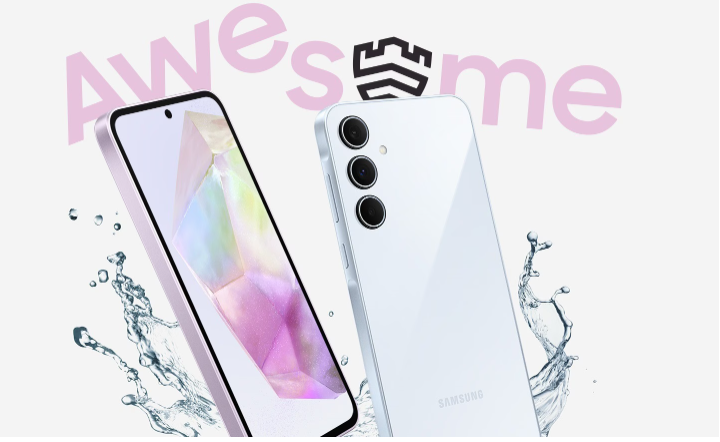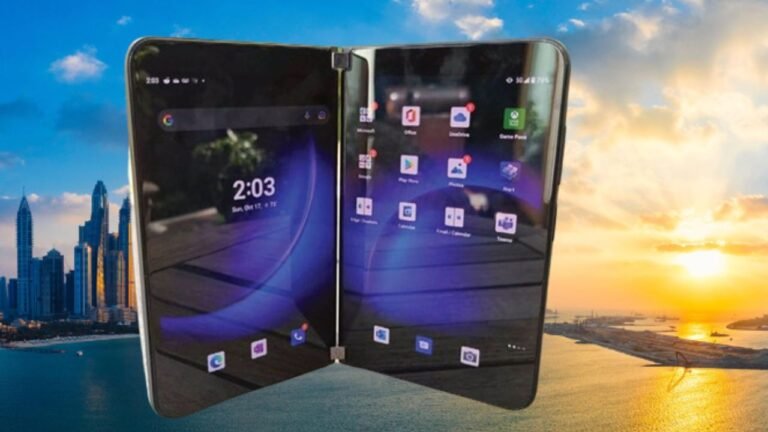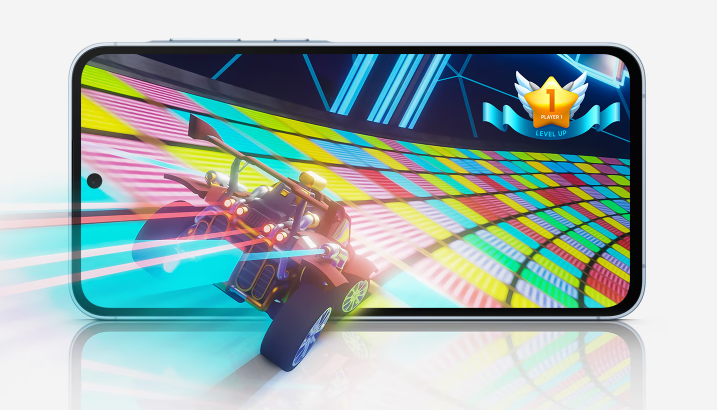Google Pixel 8 Pro Review: Where the Smartphone Meets Reality
The Google Pixel 8 Pro is Google’s finest Pixel to date, showcasing the company’s vision for the future of mobile technology. It boasts a stunning display that surpasses competitors in size and brightness, and its photo capabilities, enhanced by Google’s machine learning, are unparalleled. The new AI features range from innovative and useful to slightly peculiar, but the Pixel 8 Pro’s AI prowess and potential make it the best AI phone available. With Google’s promise of seven years of major Android updates, there’s ample time for further enhancements, making the Pixel 8 Pro an excellent foundation for future advancements.
Pros:
- Premium materials and a matte finish refresh the Pixel design
- Natural and highly useful call screening
- Incredible seven-year commitment from Google for major updates
Cons:
- Android settings and features can be confusing and hard to find
- Some AI features feel a bit creepy and impersonal
- Cameras don’t surpass the iPhone 15 Pro without editing assistance
Google Pixel 8 Pro: Quick Review
The Pixel 8 Pro is a sleek update to Google’s venerable Pixel lineup. While I’m ready for a new look and feel this year, I’m happy to report that this is Google’s best-looking Pixel yet.

This is also Google’s most ambitious Pixel ever, with significant camera upgrades that will satisfy even professionals and a Tensor G3 chipset custom-built to run Google’s machine learning features. Google is so confident in this phone’s performance that it promises an unprecedented seven years of major updates. This is longer than any other phone maker supports its phones, except for Samsung, which quickly copied Google’s move in the Galaxy S24 family. Apple, on the other hand, only offers five years of major updates.
If Google had simply released a generic smartphone with the Pixel 8 Pro’s cameras, display, and design, it would have been a simple winner, capable of competing with not-quite-flagships like the Samsung Galaxy S24 Plus or the Apple iPhone 15 Pro. Instead, Google is pushing deep into machine learning territory with generative AI features that offer new experiences on your phone. Among Android phones, it’s usually the first to get new AI features from Google. For this reason, the Pixel 8 Pro tops our first-ever list of the best AI phones.
Some of the new AI features, like the amazing new call-screening assistant, work wonderfully and are set to become an enduring part of our smartphone experience. Others, like the Magic Editor photo features, border on frightening. Most are like AI wallpaper, simple distractions and additions that could have been an app you download, but instead are part of the AI experience.
This is a decidedly Android phone, for better but mostly, these days, for worse. It can be a confusing mess. You’re faced with setup screens that never seem to go away for good, notifications that never seem to disappear, and Settings menus that are layered deep enough to strike magma.
The good news is that Google has plenty of time to fix Android, and if it does, Pixel 8 Pro owners will benefit from those improvements for seven years. That’s if Google lives up to its promise.
This is very good news indeed. In fact, it’s some of the best news I’ve heard from the Android camp in quite some time. If Google really delivers on seven years of major OS upgrades, Pixel feature drops, and security updates, the Pixel 8 Pro will be the first Android phone to beat Apple in terms of longevity.
Will the Pixel 8 Pro be worth owning in seven years? Decidedly not, not if you’re buying one today. But, when it comes time to sell your Pixel 8 Pro in a year or two, the person you sell it to will know they aren’t buying an unsupported lemon. They’re buying a phone that could last them, and possibly someone else after them, for years.
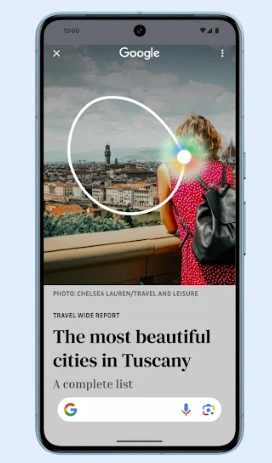
If you’re firmly encamped with Google on Android territory, the Pixel 8 Pro is a great choice for your next phone. Software-wise, Google has a lot of catching up to do against iOS 17 before I’d recommend buying it over the iPhone 15 Pro, but Google’s phone is fun and unique enough that I’d consider this phone if you can’t spring for a truly fancy foldable or the mighty Galaxy S24 Ultra.
Of course, the real fun begins when Google starts slashing prices, and it can be liberal with discounts. We’ve already seen the price drop considerably, more than $250 / £400 / AU$300 on Google’s store and on Amazon.
Google Pixel 8 Pro Review: Price and Availability
- Starts at $999 / £999 / AU$1,699 for 128GB storage
- Available with up to 1TB of storage in the US, 512GB globally
- Lowest price we’ve seen is $749 / £583 / AU$1,399 on Amazon/Google
The Pixel 8 Pro costs a bit more than the Pixel 7 Pro did at launch, though I was expecting that Google would drop the price. Frankly, the Pixel 7 Pro didn’t age very well in terms of performance and value, and rumors suggested that the Pixel 8 Pro wouldn’t offer much benefit over its predecessor. As it turns out, there’s much more value in the Pixel 8 Pro, and it holds up nicely against competitors in this price range.
The most promising way Google has added value to the Pixel 8 Pro is with its promise to support the phone for seven years of major software upgrades, security updates, and Pixel feature drops. Android phones have traditionally been lacking in terms of longevity and long-term value, and no Android phone maker had ever offered this level of long-term support before the Pixel 8. Even Apple stops supporting iPhones with new OS upgrades after five years.
The Pixel 8 Pro doesn’t have the best performance, so its prospects as a long-term device are questionable, but at least we know Google won’t ignore it and let it rot on the vine.
Of course, you probably won’t keep your phone for seven years, but when it comes time to trade or sell it, it should hold its value better because of Google’s support commitment. Time will tell; and there are other reasons why this phone is worth more than last year’s model.

The Pixel 8 Pro has a fantastic display, brighter and sharper than those on the iPhone 15 Pro Max and Galaxy S24 Plus. The phone also has the largest battery of the bunch, and battery life lived up to Google’s promises during my review period.
The cameras are better in many ways, but the specs can get a bit esoteric and hard to explain. Needless to say, they take much better photos than before, and the new AI editing tools are incredibly impressive. Scary, impressive, and I mean that sincerely.
Google Pixel 8 Pro Prices
| Storage | US Price | UK Price | AU Price |
|---|---|---|---|
| 128GB | $999 | £999 | AU$1,699 |
| 256GB | $1,059 | £1,059 | AU$1,799 |
| 512GB | $1,179 | £1,179 | AU$1,999 |
| 1TB | $1,399 | N/A | N/A |
If you have this much to spend, I’d still recommend the iPhone 15 Pro; not for the cameras or the hardware, but because iOS 17 is leaps and bounds ahead of Android 14. Apple’s software experience isn’t just simplified, it’s elegant and polished. Android has gotten unwieldy again, and it’s hard to recommend even the best Android phone over a comparable iPhone.
That said, the Pixel 8 Pro offers great value against the Samsung Galaxy S24 Plus, although if you can spend more (or get a great contract deal), both Samsung and Apple have even fancier phones with more cameras to sell you, while Google hits its ceiling with the 8 Pro.
Google Pixel 8 Pro Review: Specs
Here’s a detailed look at the Google Pixel 8 Pro’s specifications:
| Feature | Specification |
|---|---|
| Dimensions | 162.6 x 76.5 x 8.8mm |
| Weight | 213g |
| Operating System | Android 14 |
| Screen Size | 6.7 inches |
| Resolution | 1344 x 2992 pixels |
| Chipset | Google Tensor G3 |
| RAM | 12GB |
| Storage Options | 128GB, 256GB, 512GB, 1TB |
| Rear Cameras | 50MP main, 48MP 5x telephoto, 48MP ultrawide (macro) |
| Front Camera | 10.5MP |
| Battery | 5,050 mAh |
Google Pixel 8 Pro Review: Design
- Maintains the familiar Pixel 6 look
- Matte finish with refined color choices
- Consistent design philosophy for future models?
The Pixel 8 Pro’s design hasn’t strayed far from the Pixel 6 blueprint. It now features slightly more curves, new color options, and a matte finish that lends it an air of sophistication. These changes, though subtle, make the Pixel 8 Pro noticeably more refined than its predecessor.

With more rounded corners and a flatter display, the Pixel 8 Pro is easier to hold and provides a better viewing experience. The finish is exquisite, and the color palette is more sophisticated. While Bay blue is a popular choice, I personally prefer the Porcelain variant, which I requested for review.
This is arguably the best-looking Pixel phone to date, which is noteworthy given that Google has essentially iterated on the same design for three generations now. While these refinements could have been introduced earlier, it’s clear that Google is perfecting its design language.
The distinctive camera bump remains a signature feature, adding a touch of flair. On the Porcelain model, it has a subtle golden hue that glistens beautifully in the sunlight. For anyone new to the Pixel line, this is a visually appealing device.
For existing Pixel users, especially those with older models, the Pixel 8 Pro is an attractive upgrade. However, Pixel 6 owners might feel the changes are too incremental. Given the Pixel’s premium pricing, a more significant design evolution would be welcome in future iterations.
Google Pixel 8 Pro Review: Display
- Exceptional brightness and sharpness
- Outshines the iPhone 15 Pro Max in many aspects
- Slightly thicker bezel compared to the iPhone
The Pixel 8 Pro’s display is a highlight this year, branded as Super Actua by Google. This term appears to emphasize the display’s brightness, which is indeed impressive. The Pixel 8 Pro can achieve peak brightness of 2,400 nits and maintain 1,600 nits in standard conditions, making it one of the brightest displays available.
In terms of brightness, resolution, and sharpness, the Pixel 8 Pro surpasses the iPhone 15 Pro Max. While the differences are subtle in side-by-side comparisons, the Pixel’s display is noticeably brighter, especially when viewing white content.
When set to the vivid ‘Adaptive’ mode, the Pixel display offers colors and brightness levels that the iPhone cannot match. Switching to the ‘Natural’ mode brings the colors and brightness closer to what iPhone users are accustomed to.

The Pixel 8 Pro’s bezel is marginally thicker than the iPhone 15 Pro Max’s, but its smaller punch-hole camera is less obtrusive than Apple’s Dynamic Island, despite Apple’s efforts to make it a dynamic feature.
Google Pixel 8 Pro Review: Software
- Excellent call screening feature that’s natural and useful
- Several features missing at launch
- Some key features are difficult to locate
The Pixel 8 Pro’s software shines in a few areas, thanks to Google’s focus on machine learning and AI. The new call screening feature is particularly impressive, delivering a natural-sounding voice that screens calls effectively. It might sound a bit casual, but that’s preferable to a robotic tone.
Another interesting addition is the new AI wallpaper feature. Although not fully generative, it offers a fun, MadLibs-like selection process. You can choose from categories and prompts to create scenes like “A surreal bicycle made of flowers in shades of pink and purple.” With 12 object options, 30 material choices, and seven color combinations, you can create around 7,500 unique wallpapers just within the ‘Imaginary’ category.
While this feature is entertaining, it feels like something a good third-party app could do just as well, perhaps with even more options. Nonetheless, the wallpapers are attractive and enjoyable to customize.
Google promotes these AI features by emphasizing personalization, yet there’s a disconnect. For instance, creating an AI wallpaper by selecting options doesn’t feel truly personal. Similarly, using AI to write an email or generate a photo doesn’t create a personal experience but rather uses the machine to complete a task.
This misalignment extends to other AI tools, like the Pixel 8 Pro’s ability to summarize web pages and conversations. These features are useful, but Google’s messaging might give users unrealistic expectations about their personalization capabilities.
Google Pixel 8 Pro Review: Cameras
- Excellent photo quality with improved macro capabilities
- Upgrades across all cameras, particularly telephoto
- Not as strong in low-light conditions compared to the iPhone 15 Pro
The Pixel 8 Pro’s main camera is a significant upgrade from the Pixel 7 Pro, though the improvements are complex to articulate. The f/1.65 aperture lens, wider than last year’s f/1.9, allows more light to enter, enhancing image quality exponentially.
While some photos taken with the Pixel 8 Pro surpass those from the iPhone 15 Pro Max, especially in good lighting, the iPhone still excels in low-light scenarios. However, the Pixel 8 Pro shines in macro photography and food photos, capturing more detail and presenting dishes appealingly even in poor lighting.
Not all of the Pixel 8 Pro’s enhancements are available at launch. Features like Night Sight video enhancement and zoom improvements for telephoto and main cameras are expected to arrive later in a software update.
Post-capture, Google Photos on the Pixel 8 series offers unique editing tools. The Magic Editor, an evolution of Magic Eraser, introduces advanced generative AI features. You can erase elements, move objects, resize them, and more, effectively transforming your photos.
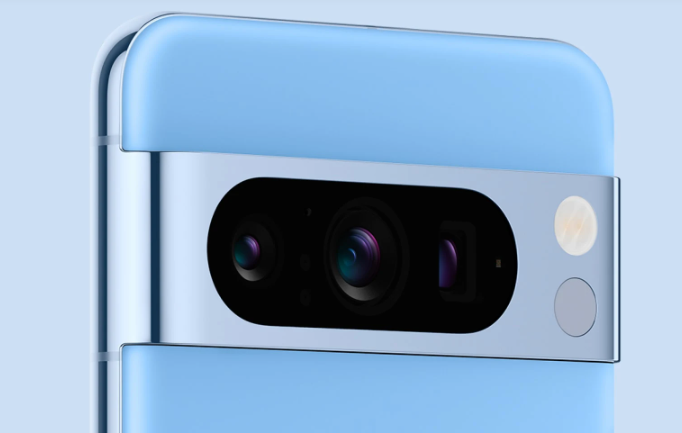
While the AI’s ability to manipulate images is powerful, results can be imperfect. For example, erasing tourists from a photo might leave behind noticeable anomalies. Despite these imperfections, the tools are a testament to Google’s innovative use of AI in photography.
Overall, while the Pixel 8 Pro’s software and camera features show great promise, the current execution feels like a work in progress. Future updates will hopefully refine these capabilities, making them as reliable as they are groundbreaking.
Google Pixel 8 Pro Review: Performance
- Smooth operation for favorite apps and games
- Lagging behind older competitor phones
- Machine learning features exhibit delays
Assessing the performance of the Pixel 8 Pro is nuanced. For everyday tasks like gaming and high-resolution video playback, the Pixel 8 Pro performs admirably. It handles popular games and videos without issues, but it falls short when compared to devices like the iPhone 15 Pro or even older models like the Galaxy S23 Ultra.
Despite these comparisons, the Pixel 8 Pro is a solid performer in its price range. It benefits from excellent battery life, thanks to the larger battery and Google’s Tensor G3 chipset, which enhances power management. The display is responsive and versatile, capable of vibrant colors or more subdued tones depending on user preference.
However, some aspects are perplexing, such as the inclusion of a temperature sensor that measures up to 300 degrees Fahrenheit. This limitation makes it impractical for tasks like checking cooking oil temperature, which typically exceeds 350 degrees.
When it comes to the Pixel 8 Pro’s machine learning features, performance issues are evident. The Magic Editor, for example, takes a long time to open and apply edits, and it often crashes during the saving process. Similarly, the AI wallpaper feature, although interesting, is slow to generate results.
Google’s promise of seven years of software updates for the Pixel 8 Pro raises questions about long-term performance. The Tensor G3 already lags behind Qualcomm’s Snapdragon 8 Gen 2 and Apple’s A17 Pro chips. Given Google’s inconsistent track record with product support, it’s uncertain whether the Pixel 8 Pro will remain competitive over such an extended period.
Google Pixel 8 Pro Review: Battery Life
- All-day battery life with ease
- Effective power management and adaptive display
- Could benefit from faster charging
The Pixel 8 Pro’s battery life has seen notable improvements, lasting comfortably through a full day of use. In controlled tests, it provided around 10 hours of screen time, though this is less impressive compared to the Galaxy S24 Plus, which can exceed 16 hours.

The phone’s power management is notably aggressive, maintaining a balance between screen brightness and battery consumption. Users can choose between Standard and Extreme battery saver modes, as well as an adaptive battery feature that optimizes performance based on usage patterns.
Charging the Pixel 8 Pro at 30W is efficient, reaching full charge in under an hour and 72% in just 30 minutes. However, there is room for improvement in charging speed, especially with larger batteries. Google provides a USB-C cable and a USB-A to USB-C adapter, but no wall charger, requiring users to purchase a compatible charger separately.
June 2024 Pixel Feature Drop added external display output
- Launch price: $999 / £999 / AU$1,699
- Lowest price on Amazon: $749 / £582.50 / AU$1,399
The Pixel 8 Pro has seen significant improvements since its launch, with the latest Pixel feature drop adding major new capabilities. The Pixel 8 Pro can now output to an external display via the USB-C port, a feature long available on Samsung Galaxy phones. Additionally, Google has activated the Find My Device network, allowing the Pixel 8 Pro to be located even after the phone has shut down.
Conclusion
The Google Pixel 8 Pro excels in several areas but has some notable shortcomings. Its performance is solid for everyday tasks, but it struggles with some of the advanced AI features and lags behind competitor devices. Battery life is a highlight, offering all-day usage and efficient power management, although faster charging capabilities would be beneficial.

The promise of seven years of software updates is ambitious but uncertain, given Google’s history with long-term support. Overall, the Pixel 8 Pro is a capable device with significant potential, especially if Google can refine its software and deliver on its long-term promises.
Recommended For You:
Google Pixel 8 Pro Review: Where the Smartphone Meets Reality
Samsung Galaxy S24 Ultra review: What’s Ultra In It?
Honor 200 Pro Review: A Portrait Photography Powerhouse
Samsung Galaxy A55 Review: Elevating Mid-Range Standards
Samsung Galaxy A35 review | A Mid-Range Marvel
Best Foldable Phones in 2024: Samsung Galaxy Z Fold, Z Flip, Pixel Fold, Moto Razr
iPhone 15 Pro Max Review: Is It Worth It?
Bose QuietComfort Ultra Earbuds Review
Best Rugged Phones To Choose From



